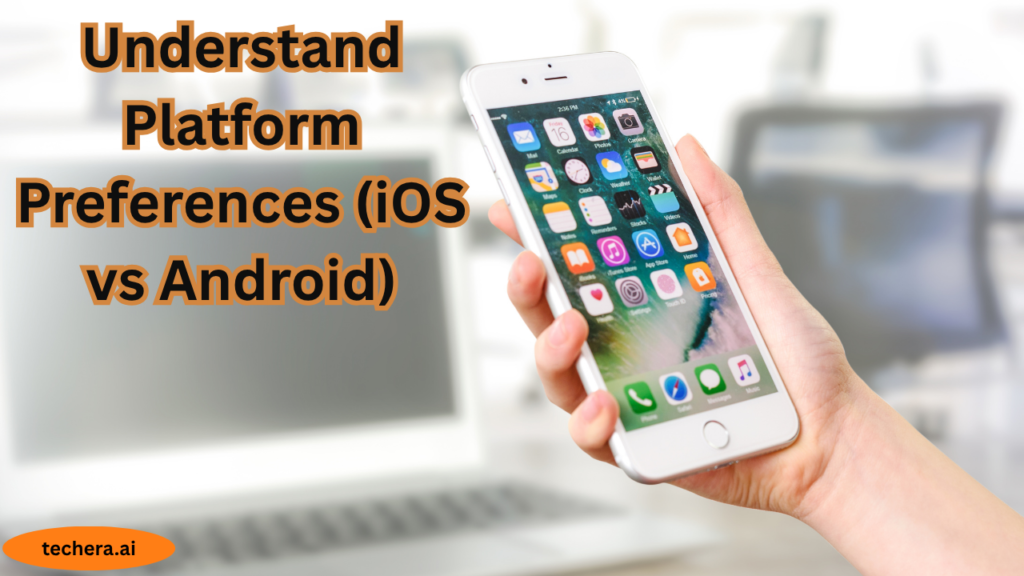
Learn how to choose the perfect Mobile App Design for your business. This guide breaks down the key considerations—from understanding your target audience to selecting the right design elements—ensuring your app aligns with your brand and meets user expectations. Make informed decisions for a successful mobile experience.
Introduction
Why Mobile App Design Can Make or Break Your Business
Your brand’s initial impression is frequently formed via your Mobile App Design. A poor design? Users uninstall within seconds. A great design? They stick around—and maybe even tell their friends.
The Role of UX/UI in Mobile Success
Think of UX as the brain and UI as the beauty. UX ensures users find what they need easily, while UI makes it a joy to look at and interact with. Together, they make or break your app.
Understanding Your Business Goals
Define the Core Purpose of Your App
Before you design anything, ask yourself: What’s the app supposed to do? Whether it’s for shopping, booking, managing data, or community engagement—your goals should shape your design.
Align Design with Business Objectives
If your goal is conversions, design for that. If it’s brand awareness, go bold with branding. Design must drive your business KPIs.
Know Your Audience
Research User Demographics and Behaviors
You wouldn’t design a game the same way you’d design a banking app, right? Use analytics, surveys, and persona creation to understand who your users are, what they want, and how they behave.
Understand Platform Preferences (iOS vs Android)

Android is the most widely used platform worldwide, although iOS users typically spend more. Your design should reflect platform expectations and standards. One size doesn’t fit all.
Choose the Right Design Style
Minimalist vs Feature-Rich UI
A minimalist UI is great for focus and speed, while a feature-rich UI is perfect for power users. Find a balance between simplicity and utility.
Native vs Hybrid vs Cross-Platform UI Trends
Native design = best performance.
Hybrid = quicker development.
Cross-platform (Flutter, React Native) = wide reach.
Choose based on your resources and audience.
Prioritize User Experience (UX)
Smooth Navigation and Flow
Ever get lost in an app? Bad UX. A good app feels like reading a book—you always know where you are.
Speed, Accessibility, and Responsiveness
Slow loading? Laggy buttons? Game over. Your app should feel snappy and usable even with one hand or on a shaky train ride.
Focus on Visual Appeal (UI)
Color Psychology and Brand Alignment
Blue says trust. Red triggers urgency. Black feels luxurious. Your UI colors should support your message and brand identity.
Consistency in Fonts, Icons, and Layout
Users love patterns. Use consistent font sizes, icon styles, and layouts across screens. Consistency builds familiarity, which builds trust.
Keep Functionality at the Forefront
Designing Around Core Features
Don’t let flashy features drown out your app’s core value. Put the most-used actions front and center.
Avoiding Feature Overload
Too many features confuse users. Less is often more.
Platform Guidelines and Best Practices
Apple’s Human Interface Guidelines
Apple emphasizes clarity, deference, and depth. Stick to its rules if you want smooth App Store approval.
Google’s Material Design Principles
Motion, striking visuals, and a cohesive user experience are all encouraged by Material Design. It’s great for Android-native apps.
Importance of Prototyping and Wireframing

Testing Before Building
A prototype helps visualize the app. It saves time, money, and headaches down the line.
Gathering Feedback Early
Show it to real users. Iterate before the code even begins. You’ll thank yourself later.
Custom vs Template-Based Designs
Pros and Cons of Custom App Design
Custom designs = originality + brand alignment
But they take time and cost more.
They’re worth it if user experience is key to your business.
Also Read : Mobile App Design Best Practices for Increased User Engagement
When to Use Templates (and When Not To)
Templates are great for MVPs or tight budgets. But avoid them for long-term apps that need to stand out or scale.
Designing for Scalability
Planning for Future Features and Users
You don’t want to redesign from scratch in 6 months. Think ahead: what features might be added later?
Modular Design Principles
Design in blocks. It makes the app easier to update, maintain, and grow without starting from zero.
Security and Privacy in Design
UI Elements for Trust and Safety
Add visible security features like lock icons, 2FA buttons, and data policy notices to reassure users.
Designing with GDPR and Compliance in Mind
Make privacy settings and permissions clear and accessible. No one likes shady apps.
Working with the Right Design Team
Hiring UI/UX Designers or Agencies
A freelancer can work for small projects, but agencies offer end-to-end solutions for more complex needs.
Effective Communication and Feedback Cycles
Set regular check-ins. Use tools like Figma, Slack, or Trello. The best design comes from collaboration.
Measuring Design Effectiveness
KPIs for Mobile App Design Success
Track:
- Retention Rate
- Session Duration
- Conversion Rate
- App Rating
These numbers tell you if your design is doing its job.
A/B Testing for Design Iteration
Can’t decide between two layouts? Test both. Let users vote with their thumbs.
Conclusion
Mobile app design isn’t about trends or templates—it’s about what works best for your business and your users. The right design builds trust, increases retention, and drives growth. Take your time, plan wisely, and build something your users will love coming back to.
Frequently Asked Question
Q. How do I know which design style fits my business?
A. Start with your brand tone and audience. A financial app needs clarity; a fashion app can be more expressive.
Q. Is it better to build a native or cross-platform design?
A. If you have the budget and performance is crucial, go native. For faster development across platforms, go cross-platform.
Q. How important is mobile app branding?
A. Extremely. A well-branded app builds trust, recognition, and loyalty.
Q. What is the cost difference between custom and template-based designs?
A. Custom can cost 2–5x more but offers long-term value. Templates are cheaper but less scalable.
Q. How long does it take to create an effective mobile app design?
A. Typically 4–8 weeks, depending on the complexity, feedback loops, and revisions.

